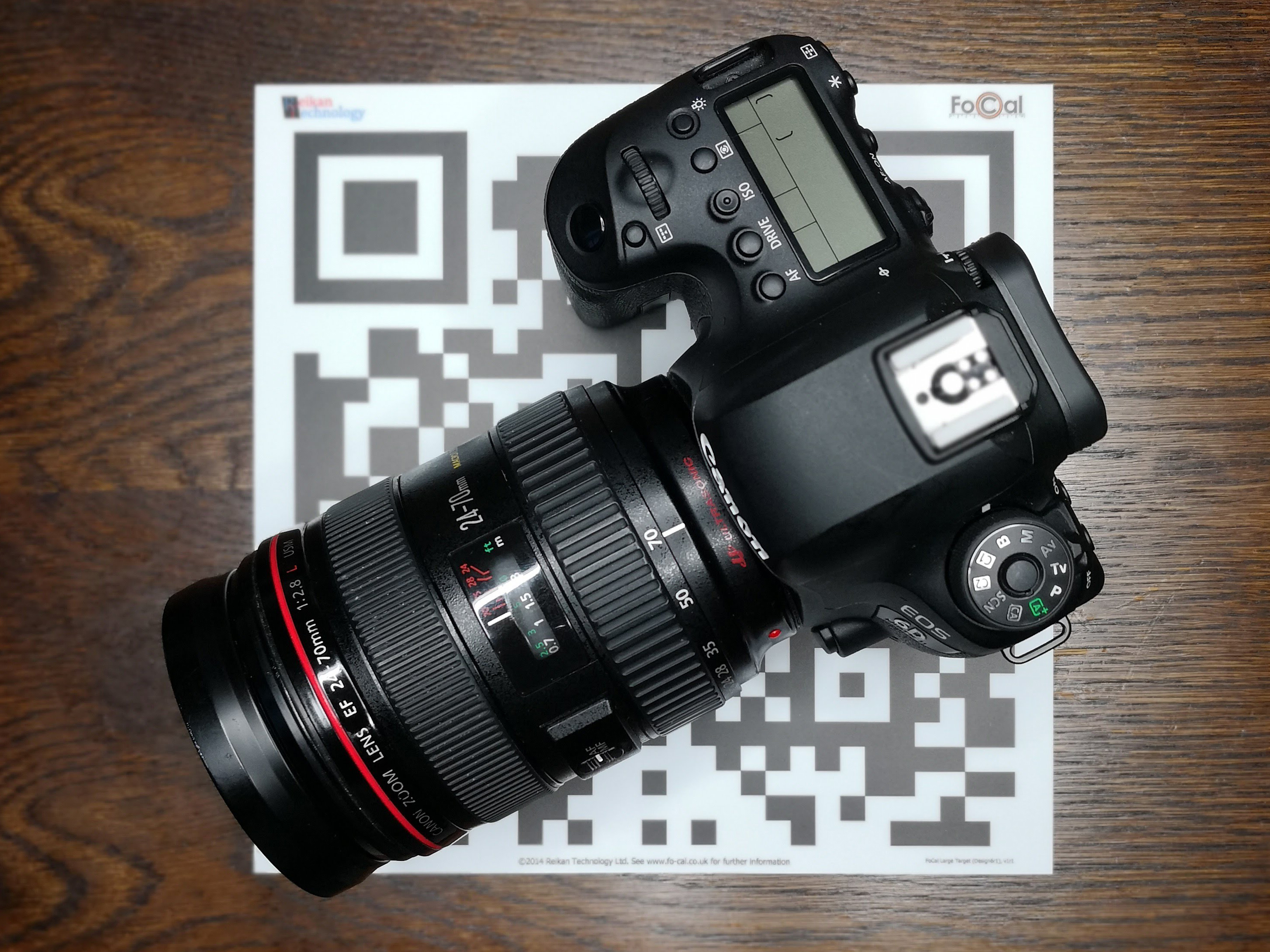

That solves one of the big problems with homebrew solutions. Base unit already assembled, stainless steel ruler in bag, sight guide with holes. When you can see the red dots of the rear panel through the holes in the focus target on your camera, you have correctly aligned the camera to the LensAlign, centered on the target hole you're using. The front focus target has holes bored through several locations to let you see through to the rear sighting panel.

That, in a nutshell is what LensAlign does. "Ideally," he recommends, "the contrast in the reference target should cover the entire area of the camera's center focusing point, and the reference target should be perfectly parallel to the camera's focal plane." But as Westfall points out, "doing so will degrade the consistency of the camera's focusing measurement." Trying to autofocus on a single line on the tape measure, the autofocusing system (which is just multiple pairs of linear pixel arrays) only a few pixels from each active pixel array be able to see the target. Some homebrew solutions advise you to focus on a tape measure running away from you on the floor, the camera held at a 45 degree angle. The adjustment is also proportional to the maximum aperture of the lens, with the maximum amount applied at the maximum aperture where depth of focus is smaller. These units represent compensations made by the autofocus system in the camera and do not mechanically alter the lens. One step focus adjustments can be made on a scale of +/-20 units for most cameras. Until recently, you had to send your gear to the manufacturer's service department to find out which one was the culprit and to make the adjustment.īut since the inclusion of microadjustments in recent dSLR bodies, homebrew solutions are legion - primarily because there has been no other way to attack this problem. So if you have lenses that require an 18, 14, 7 and 4 adjustment, you can use a 4 adjustment for the body itself to limit the specific lens adjustments to 14, 10 and 3.īoth the body and a lens can be adjusted to correct for either issue. How do you tell the difference? If every microadjustment is back or front, you can find the common amount and subtract that from every adjustment. Canon stores 20 in the 1Ds Mark III, 1D Mark III, 5D Mark II and 50D. Nikon stores 12 in the D300 and D700 but 20 in the D3/D3X. The number of lens corrections the camera can remember varies. Recent Canon and Nikon cameras provide a microadjustment for autofocus with two modes: a default that can be applied regardless of the lens mounted and another for just the particular lens mounted. The cause of the problem may be in the camera body itself or in a particular lens. 2008 Tech Tips column of The Digital Journalist.
Reikan focal pro vs lens align manual#
Canon's Director of Media and Customer Relations Chuck Westfall published a manual procedure in the Dec. In fact, that's the job the LensAlign was designed to do. Tapes sent us an early production unit of the Pro model minus the mirror and we've given it a test drive to see just how well it works.īut it can be measured with a variety of targets, including the LensAlign. See Tapes' feature comparison below to help decide between models. Setup can take as little as a couple of minutes, according to Tapes, and results are repeatable, thanks to the unique alignment and focusing aids built into the device, regardless of which model you buy. The Pro's two-plane alignment was developed before the Lite's mirror system but Tapes decided to include the mirror system in the Pro version as well. The Pro version uses either a mirror or a two-plane focus target. How it helps you align the sensor plane is really the only difference between the two designs. Tripod mount, mirror sighting (most accurate)įront and rear QuickSight camera to LA alignment

Accuracy, repeatability and compatibility of focus test/calibration


 0 kommentar(er)
0 kommentar(er)
